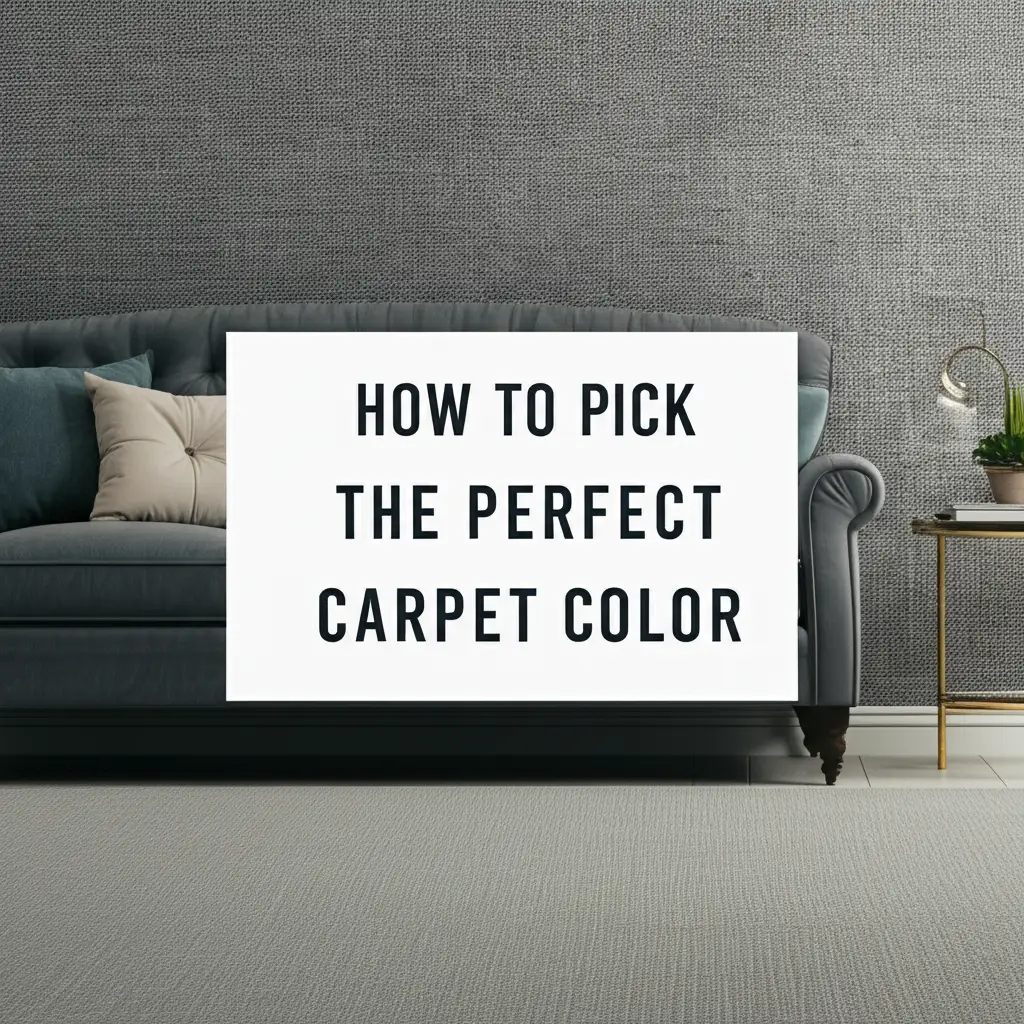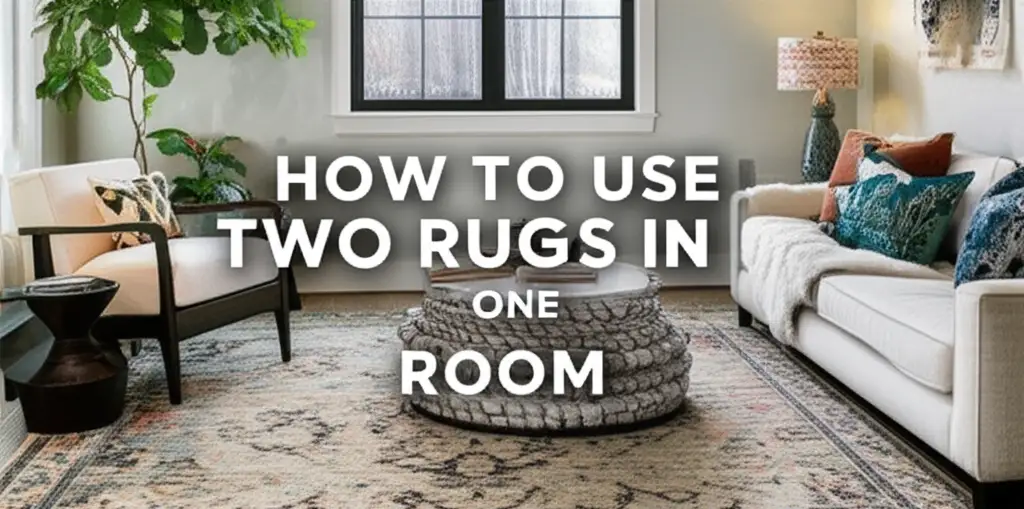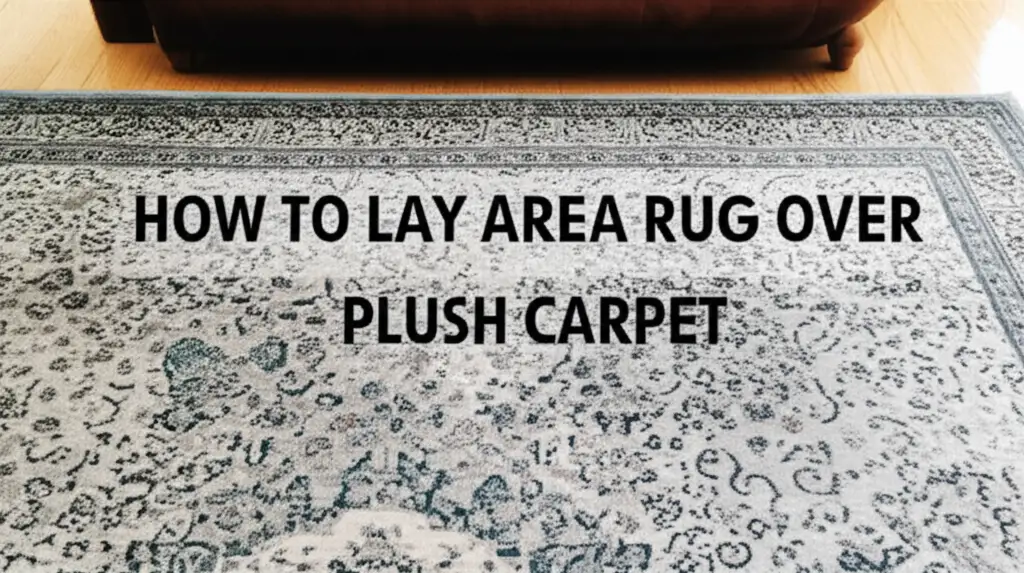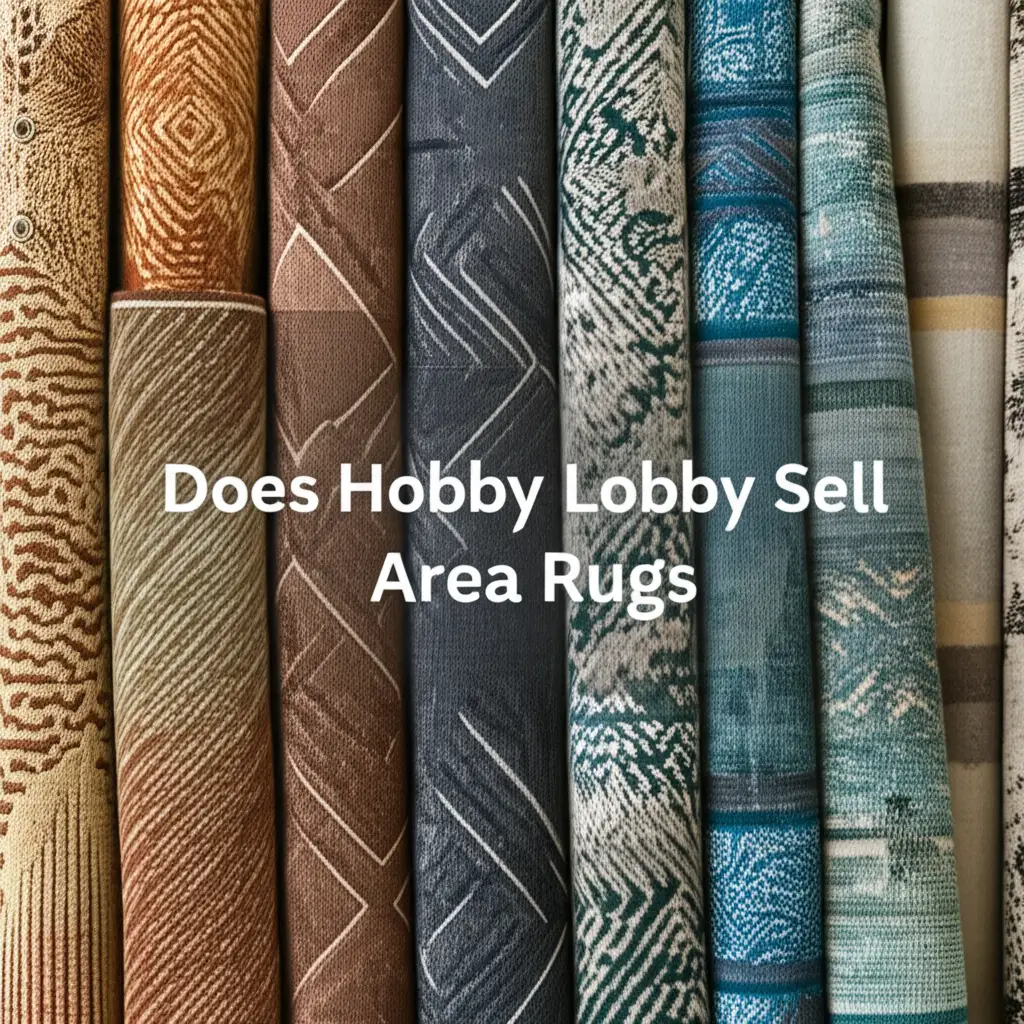· Mason Everett · Home Decor · 16 min read
Does Your Carpet Need To Match The Furniture
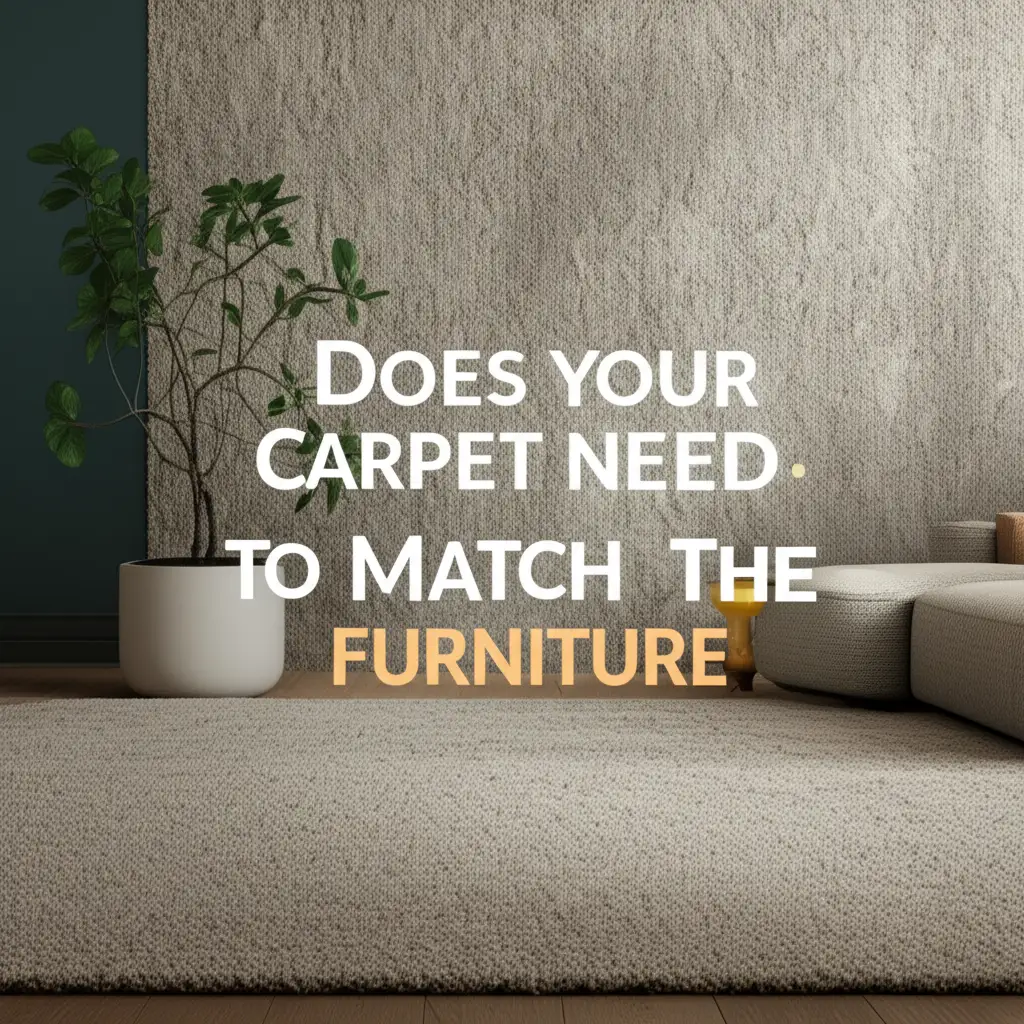
Does Your Carpet Need To Match The Furniture: Finding Harmony
Stepping into a well-decorated room feels inviting. Many people wonder about the design rules, especially regarding carpets and furniture. Does your carpet need to match the furniture exactly? This common question often puzzles homeowners. Some believe a perfect match is the only way to achieve a cohesive look. Others prefer a more eclectic approach.
I understand this dilemma well. Creating a home that feels both stylish and comfortable is important. This article will explore various strategies for pairing carpets and furniture. We will look at color theory, texture play, and the role of area rugs. You will discover how to create a harmonious space that reflects your personal style. Let’s uncover the secrets to a beautifully coordinated home.
Takeaway
- Exact Matching is Not Required: Focus on cohesion and harmony, not identical colors.
- Use Complementary Colors: Choose colors that work well together, even if different.
- Balance Patterns and Textures: Mix varied elements for visual interest.
- Leverage Neutral Bases: Neutrals offer versatility and allow for colorful accents.
- Area Rugs Unify Spaces: Use rugs to define zones and bridge decor elements.
- Consider Room Size and Light: These factors influence color perception and atmosphere.
- Prioritize Personal Style: Your home should reflect your unique taste and comfort.
Does your carpet need to match the furniture? No, an exact match is rarely necessary. Instead, focus on creating a cohesive look. Your carpet and furniture should complement each other. This creates visual harmony and a well-designed space.
The Myth of Matching: Why Cohesion Trumps Exactness
Many people think their carpet needs to match the furniture perfectly. This idea is a common misconception. Exact matching can make a room look flat or uninspired. A perfectly matched room can lack depth. Instead, the goal is to achieve cohesion. Cohesion means elements work well together. They create a unified and pleasing appearance.
Think of a beautiful outfit. Not every piece is the same color. Instead, colors and textures are chosen to complement each other. This creates an interesting and balanced look. Your home decor follows similar principles. We aim for harmony rather than uniformity. When carpet and furniture complement each other, the room feels inviting. It creates a space that feels complete.
Understanding Color Theory Basics
Color theory helps us understand how colors interact. It is a powerful tool for interior design. Colors can be analogous, complementary, or monochromatic. Analogous colors sit next to each other on the color wheel. They create a calm, flowing look. Complementary colors are opposite each other. They provide strong contrast and energy. Monochromatic schemes use different shades of one color. This creates a subtle and elegant feel.
Choosing colors for your carpet and furniture does not mean finding the same shade. It means selecting colors that support each other. For example, a warm-toned carpet pairs well with cool-toned furniture. This creates balance. Or, a neutral carpet can provide a base for colorful furniture. Learning basic color theory guides good design choices. It helps you make intentional decisions.
The Role of Texture in Room Design
Texture adds another layer of interest to a room. It refers to how a surface feels or looks. Think about soft shag carpets versus smooth leather sofas. These different textures add visual weight and warmth. They make a room more inviting. Combining textures prevents a space from looking dull.
A room with varying textures feels rich and deep. If your carpet is plush, consider a smoother fabric for your sofa. If your furniture has a smooth finish, a textured rug can add softness. This contrast creates a dynamic environment. It makes the room more enjoyable to experience. Texture is as important as color in creating a cohesive space.
Complementary Colors and Contrasting Tones
You do not need to choose a carpet that exactly matches your furniture. Instead, think about complementary colors. These are colors that look good together. They may not be identical, but they enhance each other. Complementary colors create visual interest. They add vibrancy to a room. This approach avoids a bland, uniform look.
Using contrasting tones also works well. A light carpet can pair beautifully with dark furniture. Or, a patterned carpet can add excitement to solid-colored pieces. This contrast draws the eye. It defines different elements in the room. A well-chosen contrast makes your decor stand out. It gives the room character.
Using a Color Wheel for Inspiration
A color wheel is a simple tool for interior design. It shows how colors relate to each other. You can use it to find complementary colors. Pick a main color from your furniture. Then, look across the wheel to find its complement. For example, blue and orange are complementary. A navy sofa could look stunning with an orange-toned rug. This creates a bold yet balanced statement.
The color wheel also helps you find analogous colors. These are colors next to each other on the wheel. They create a more serene and flowing look. For instance, a green carpet might pair well with blue furniture. This creates a calm and natural feel. The color wheel takes the guesswork out of color selection. It helps you make confident design choices.
Balancing Warm and Cool Hues
Every color has a temperature: warm or cool. Reds, oranges, and yellows are warm colors. They evoke energy and coziness. Blues, greens, and purples are cool colors. They bring a sense of calm and spaciousness. Balancing these hues is key to a comfortable room. A room that is too warm can feel overwhelming. A room that is too cool can feel sterile.
Mixing warm and cool tones creates balance. If your furniture is mostly cool (e.g., gray sofa), choose a warm-toned carpet (e.g., a beige or cream). This adds warmth and invites comfort. Conversely, if your furniture is warm (e.g., brown leather), a cool-toned carpet (e.g., light blue) can provide a refreshing contrast. This thoughtful mix creates a balanced and welcoming atmosphere. It makes the room feel right.
Leveraging Neutral Palettes for Versatility
Neutral colors are a powerful tool in home decor. These include shades of beige, gray, white, and taupe. They create a calm and versatile backdrop. Using neutrals for your carpet and furniture offers many benefits. It allows for flexibility in decorating. You can easily change accent colors without redecorating everything.
A neutral carpet is like a blank canvas. It provides a solid base for any style of furniture. Neutral furniture also allows for variety. You can introduce pops of color through pillows, throws, or artwork. This approach makes decorating easier. It helps your home adapt as your tastes change over time.
Benefits of Neutral Carpets
Neutral carpets are a popular choice for good reason. They offer incredible versatility. A beige, gray, or cream carpet works with almost any color scheme. This means you are not limited to one style. You can change your wall color or furniture later. The carpet will still fit. Neutral carpets also make rooms feel larger and brighter. They reflect light well.
Choosing a neutral carpet reduces decision fatigue. It simplifies the overall design process. You can then focus on bolder choices for furniture or accessories. Neutral carpets also provide a sense of calm. They create a serene atmosphere in any room. This makes your home a peaceful retreat.
Choosing Neutral Furniture Pieces
Just like carpets, neutral furniture offers great flexibility. A gray sofa or a cream armchair provides a timeless base. These pieces do not go out of style quickly. They allow you to introduce trends through smaller items. For example, you can add colorful cushions or a vibrant area rug. This refreshes the look of your room easily.
Neutral furniture is also a wise investment. It typically costs more than accessories. Choosing neutral colors ensures your main pieces have longevity. They will remain stylish even as design trends shift. This smart approach creates a foundation that supports endless design possibilities. It gives you freedom to express yourself.
Patterns and Textures: Adding Depth and Interest
Mixing patterns and textures can bring a room to life. It adds depth and visual interest. Many people fear combining patterns. They worry about clashing. However, when done thoughtfully, pattern mixing creates a dynamic space. It shows personality. Your carpet and furniture do not need to be solid. They can feature unique patterns.
Consider a subtly patterned carpet. Pair it with solid-colored furniture. Or, choose a solid carpet and patterned accent chairs. The key is balance. Vary the scale of your patterns. Use different textures to add richness. This creates a layered, inviting look. It makes your home feel professionally designed.
Smart Pattern Play
When mixing patterns, follow a few simple rules. First, vary the scale. Combine a large-scale pattern with a small-scale one. For example, a large floral rug can pair with a small geometric pillow. This prevents the patterns from competing. Second, use a consistent color palette. Stick to a few main colors throughout your patterns. This creates harmony despite different designs.
Third, introduce a solid or neutral element. This provides a visual break. It rests the eye. A solid sofa against a patterned rug works well. Or, plain curtains can balance patterned wallpaper. Smart pattern play makes a room exciting. It reflects your adventurous spirit.
Incorporating Varied Textures
Texture is crucial for a comfortable home. It adds a sensory dimension to your decor. Think about different materials: wood, metal, wool, silk, linen. Each offers a unique feel and look. Incorporating varied textures makes a room feel rich and inviting. It creates a tactile experience.
Combine a rough, natural fiber rug with smooth, polished wood furniture. Add soft velvet cushions to a crisp linen sofa. Use a knitted throw blanket over a leather armchair. These contrasts add warmth and visual appeal. They prevent the room from feeling flat. Varying textures makes a space feel more lived-in and luxurious. It enhances comfort.
Area Rugs as Design Anchors and Unifiers
Area rugs are incredibly versatile design tools. They can define a space within a larger room. They also add warmth and absorb sound. Crucially, area rugs bridge the gap between carpet and furniture colors. If you have wall-to-wall carpeting, an area rug can introduce new colors. It can also layer textures. This adds dimension to your floor.
An area rug can ground a furniture grouping. It creates a focal point. It can also tie together different colors from various furniture pieces. Think of it as a central element that unites your decor. Area rugs are an excellent way to introduce pattern or vibrant color. They do not commit you to it permanently.
Sizing Your Area Rug Correctly
The right size area rug makes a big difference. An undersized rug can make a room feel smaller. It can also make furniture look disconnected. For a living room, aim for a rug that allows at least the front legs of all main furniture pieces to rest on it. Ideally, all furniture sits completely on the rug. This creates a cohesive “island.”
In a dining room, the rug should extend at least 24 inches beyond the table on all sides. This allows chairs to remain on the rug when pulled out. A properly sized rug grounds your furniture grouping. It defines the space. For more detailed guidance, consider learning about what proportions for an area rug in a furniture grouping work best.
Area Rugs and Room Flow
Area rugs help guide the eye through a room. They create visual pathways. Using rugs in different zones of an open-concept space helps define each area. For example, a rug under the sofa defines the living area. Another rug in a reading nook creates a cozy corner. This clear definition improves the room’s flow.
Rugs also add a layer of comfort underfoot. They can soften hard flooring. They make a space feel more inviting. They absorb sound, making the room quieter. Think about whether do living rooms need rugs in your specific space. A well-placed area rug enhances both aesthetics and function. It contributes to a harmonious home.
Considering Room Size and Natural Light
The size of your room impacts color choices significantly. Light colors make small rooms feel larger. They reflect more light. Dark colors can make large rooms feel cozier. They absorb light. Understanding these effects helps you choose carpet and furniture colors wisely. This ensures your choices enhance the space.
Natural light also plays a crucial role. A room with abundant sunlight can handle darker colors. A dimly lit room benefits from lighter hues. The amount and type of light change how colors appear. Always observe samples in your actual room. This helps you see colors under real conditions.
Light Reflection and Color Perception
Light colors reflect light. This makes a room appear brighter and more open. White, cream, and pale gray carpets are good for small or dark rooms. They maximize available light. Dark colors absorb light. This can make a room feel smaller and more intimate. A dark carpet in a large room can create a cozy atmosphere.
The color of your walls also interacts with light. Light walls bounce light around. This enhances the effect of light carpets. Darker walls can make even light carpets appear muted. It is important to consider the entire room. All elements work together to influence light and perception.
Optimizing for Small Spaces
Small rooms benefit from careful color selection. Stick to a lighter color palette for both carpet and furniture. This creates a sense of openness. Use a monochromatic or analogous color scheme. This creates a seamless flow. It avoids visual clutter. A small rug can define a seating area without overwhelming the space.
Consider furniture with exposed legs. This allows light to pass underneath. It makes the room feel less heavy. Avoid large, bulky pieces. Keep patterns subtle. Focus on functionality and simplicity. These strategies help small rooms feel spacious and inviting. They make the most of limited square footage.
Personal Style and Practicality: Your Home, Your Rules
Ultimately, your home should reflect you. There are no strict rules that dictate your carpet needs to match the furniture. Design guidelines exist to help, not to restrict. Your personal style is the most important factor. Choose colors and textures that you love. Create a space that brings you joy. Your home is your sanctuary.
Beyond aesthetics, consider practicality. Carpets and furniture need to withstand daily life. Think about durability, maintenance, and cleaning. A beautiful room is also a functional one. Balance your design aspirations with your lifestyle needs. This ensures your home is both lovely and livable.
Durability and Lifestyle Needs
Consider who lives in your home. Do you have pets? Young children? These factors impact your choices. A high-traffic area needs a durable carpet. Low-pile carpets are easier to clean than high-pile ones. Darker carpets can hide stains better than lighter ones. Furniture fabrics also vary in durability.
Leather or micro-fiber are often good choices for busy households. They resist spills and wear. Think about how often you clean. Some materials require more maintenance than others. Choose materials that fit your lifestyle. This reduces stress in the long run. It ensures your home remains beautiful with less effort.
Expressing Your Unique Aesthetic
Your home is a canvas for your unique taste. Do not be afraid to experiment. Mix different styles. Combine vintage pieces with modern ones. Choose bold colors if you love them. If you prefer minimalist design, stick to simple lines and neutral tones. Your home should tell your story.
You can find inspiration from many sources. Design magazines, online galleries, and social media offer ideas. But always filter these through your personal preferences. What makes you feel comfortable? What colors make you happy? Your home’s design should be a reflection of you. It is your space to enjoy.
FAQ Section
1. Is it better for carpet to be lighter or darker than furniture? It is often better for the carpet to be lighter or a similar neutral tone to the furniture. This creates a sense of spaciousness and acts as a foundation. However, a darker carpet can also provide a cozy contrast. The key is balance and overall harmony. Consider the room’s size and light levels.
2. Can I mix patterned carpet with patterned furniture? Yes, you can mix patterns. The trick is to vary the scale of the patterns. Combine a large-scale pattern with a smaller one. Also, keep the color palette consistent across patterns. This creates a dynamic yet cohesive look. Introduce solid elements to provide visual rest.
3. How do I choose a carpet color if my furniture is multicolored? If your furniture is multicolored, choose a carpet color that picks up one of the less dominant colors in your furniture. Alternatively, opt for a neutral carpet (beige, gray, cream). This allows the furniture to be the focal point. It provides a grounding element that unifies the space.
4. Should my area rug match my wall-to-wall carpet? Your area rug does not need to match your wall-to-wall carpet exactly. It should complement it. You can use an area rug to add a layer of texture or a pop of color. Choose a rug that contrasts slightly or features a pattern that works with the existing carpet. This creates depth.
5. What is the best way to test carpet and furniture colors together? Always test samples in your home. Bring swatches of carpet and fabric samples for furniture. Place them in the room where they will be used. Observe them at different times of day. Natural light changes how colors appear. This helps you make the best decision.
6. Does the style of carpet need to match the style of furniture? Not necessarily. Mixing styles can add character. A modern carpet can pair well with traditional furniture, for example. The goal is to create a cohesive theme, even if elements come from different styles. Focus on common design elements like color, texture, or form.
Conclusion
So, does your carpet need to match the furniture? The simple answer is no. Exact matching is not a design requirement. In fact, it often leads to a less interesting space. The true goal is to create harmony and cohesion. Your carpet and furniture should complement each other. They should work together to form a beautiful, inviting room.
By understanding color theory, embracing contrasting textures, and utilizing area rugs effectively, you can achieve a stunning outcome. Remember to balance practicality with your personal style. Your home is a reflection of you. I encourage you to experiment with colors and textures. Create a space that feels uniquely yours. Make choices that bring you joy. Start planning your harmonious home design today. Your perfect space awaits!
- carpet furniture matching
- interior design tips
- home decor style
- color coordination
- area rug placement
- decorating advice


